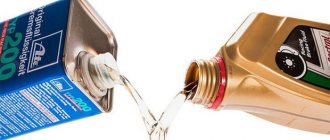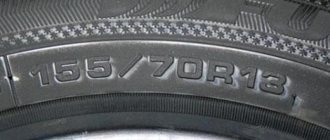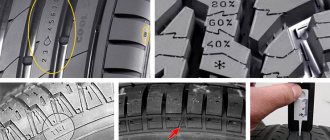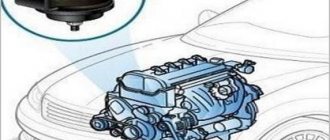It is known that a battery is a dynamic device. Its performance and capacity depend on storage conditions. Therefore, it is important to know how to decipher the information on the battery and select the right device according to technical parameters and production date. A peculiarity of the marking of acid batteries is the difference in the designation of characteristics by domestic and foreign manufacturers.
Labeling options
The marking code will depend not only on the country of manufacture, but also on the type of battery. Different batteries are used for different purposes. There are starter batteries that are designed for use in cars. There are more powerful ones, dry charged ones and others. All these parameters must be specified for the buyer.
Battery marking
As a rule, the labeling should contain the following information:
- name and country of manufacturer;
- battery capacity;
- rated voltage, cold cranking current;
- battery type;
- date and year of issue;
- number of elements (cans) located in the battery case;
- polarity of contacts;
- alphabetic symbols that show parameters such as charge or service.
Each standard has its own common features, but also its own characteristics. For example, it is very important to be able to read the manufacturing date. After all, the battery must be stored under special conditions and at a certain temperature. Improper storage can affect the quality of the battery. Therefore, it is better to choose fresh batteries that are fully charged.
Battery polarity
Polarity is the location of the positive and negative terminals in relation to the front of the battery. It is of great importance for connecting the battery to the terminals. If you select and connect incorrectly, you risk getting a short circuit or burning the entire electrical wiring of the car.
The polarity of batteries can be straight (“+” is on the left) or reverse (“+” is on the right). The first option is typical for connecting batteries in Russian-made cars, the second is the “European standard” for foreign cars.
It is necessary that fairly short wires with terminals in the car reach their corresponding terminals on the battery. If you do not pay attention to this when purchasing, you may have to change the battery or extend the standard electrical wiring cables. Both are undesirable.
Russian-made batteries
Marking of Russian-made batteries is carried out in accordance with GOST 959-91. The meaning is conventionally divided into four categories that convey specific information.
- The number of cells (cans) in the battery case is indicated. The standard number is six. Each produces a voltage of just over 2V, for a total of 12V.
- The second letter indicates the battery type. For automobiles, these are the letters “ST”, which means “starter”.
- The following numbers show the battery capacity in amp hours.
- Further, the letters may indicate the case material and the condition of the battery.
Marking of Russian-made batteries
Example. 6ST-75AZ. The number "6" indicates the number of cans. "ST" indicates that the battery is a starter battery. Battery capacity – 75 Ah. “A” means that the case has a common cover for all elements. “Z” means the battery is filled with electrolyte and charged.
The last letters can mean the following:
- A – general battery cover.
- B – the battery is filled with electrolyte and fully charged.
- T – the body is made of thermoplastic.
- M – the body is made of mineral plastic.
- E – ebonite body.
- P – separators made of polyethylene or microfiber.
The inrush current value is not indicated on the label, but can be found on other labels on the housing. Each type of battery of different power has its own starting current strength, housing dimensions and discharge duration. The values are shown in the following table:
| Battery type | Starter discharge mode | Overall dimensions of the battery, mm | |||
| Discharge current strength, A | Minimum discharge duration, min | Length | Width | Height | |
| 6ST-55 | 255 | 2,5 | 262 | 174 | 226 |
| 6ST-55A | 255 | 2,5 | 242 | 175 | 210 |
| 6ST-60 | 180 | 3 | 283 | 182 | 237 |
| 6ST-66A | 300 | 2,5 | 278 | 175 | 210 |
| 6ST-75 | 225 | 3 | 358 | 177 | 240 |
| 6ST-77A | 350 | 2,5 | 340 | 175 | 210 |
| 6ST-90 | 270 | 3 | 421 | 186 | 240 |
| 6ST-110A | 470 | 2,5 | 332 | 215 | 230 |
Production technology
Sb/Sb (antimony, low antimony)
Old classic technology. The battery uses antimony in the lead, which strengthens the lead and prevents it from falling out of the electrodes at the slightest vibration. The main disadvantage of antimony batteries is the need for constant maintenance. The water evaporates and you need to constantly monitor the electrolyte level and top up as necessary. Antimony batteries cannot be stored without recharging for more than a month. The combination of antimony and lead causes water to break down into hydrogen and oxygen at low voltage and electromotive force. When oxygen is released, the positive plates oxidize. Oxidation occurs faster in antimony batteries than in others.
Sb/Ca (Hybrid)
The positive electrode of the hybrid is made using low-antimony battery technology from lead and antimony. Negative electrode using calcium technology made of calcium with the addition of lead. The lead-antimony plate ensures power resistance to deep discharges. In turn, lead-calcium provides a reduction in water evaporation and reduces the self-discharge factor. Hybrid batteries combine and combine the strengths of antimony and calcium battery types and minimize their disadvantages.
Ca/Ca (Calcium)
It is a type of rechargeable battery whose plates are made of lead doped with calcium. The amount of the last element in percentage terms is extremely insignificant. As an alloying element in such batteries, calcium replaced antimony, which had been used for these purposes for a long time, but had a number of disadvantages, to eliminate which it was necessary to select another substance. The owner of this battery does not need to carry out additional manipulations, such as measuring the level and density of the electrolyte. Having installed a new calcium battery, you can simply forget about it for almost the entire period of operation, periodically paying attention to recharging. The main disadvantage and the main difference between calcium batteries and their hybrid or antimony counterparts is their sensitivity to deep discharges. Just one deep discharge is enough for such a battery to lose a fifth of its capacity. A single full discharge - and the battery will lose half its capacity, while a device that has survived 9-10 discharges becomes completely unusable.
AGM
The most modern technology of maintenance-free lead-acid automotive batteries. Due to the special composition of the fiber, the electrolyte does not spread or evaporate, forming a dense adsorbed mass. Such batteries have a high starting current, inertness of the plates to vibrations, absence of gas evolution and evaporation of the electrolyte, resistance to deep discharge, resistance to frost and fast charging.
EFB
This battery is an improved type of lead-acid battery; it is more productive in operation than models of the previous generation. In this model, the lead plates are much thicker, and each plate is wrapped in a bag of special material, which is impregnated with electrolyte. A polyester mesh located between the separator and the plate keeps the active mass inside and prevents it from being washed out. A fiberglass pile is glued to the separator to maintain the correct position of the plates. The volume of electrolyte is reduced three times. Increased resistance to deep discharge, this allows the battery to be restored one hundred percent. The starting current indicators have been improved to almost fifty percent.
This innovative technology allows the batteries to last longer than classic lead batteries. But at the same time, such batteries are more affordable than AGM batteries.
GEL
Lead-acid maintenance-free batteries in which the electrolyte has a jelly-like state, since silicon dioxide is added to the electrolyte. The technology allows you to increase the number of possible discharge and charge cycles and the ability to recover after a deep discharge. At its core, a gel battery is a power (traction) battery, most suitable for electric vehicles and forklifts, as well as for backup power supply systems. Starting characteristics are worse than AGM or EFB.
Battery made in Europe
European manufacturers use two standards for labeling:
- ENT (European Typical Number) – considered international.
- DIN (Deutsche Industri Normen) - used in Germany.
ENT standard
The international European standard code ENT consists of nine digits, which are also divided into four parts.
- The first number shows the approximate battery capacity range:
- “5” – range up to 99 A*h;
- “6” – ranging from 100 to 199 A*h;
- “7” – from 200 to 299 Ah.
- The next two digits indicate the exact battery capacity. For example, “75” corresponds to 75 Ah. You can also find out the capacity by subtracting 500 from the first three digits.
- The three numbers after indicate design features. Numbers from 0-9 indicate the case materials, polarity, battery type, and more. More precise values can be found in the instruction manual.
- The next three digits show the starting current value. But to find out, you need to make some mathematical calculations. You need to multiply the last two digits by 10 or simply add 0, and then you get the full value. For example, number 030 means that the starting current is 300A.
Battery marking according to the ENT standard
In addition to the main code, there may be other indicators on the battery case in the form of pictograms or pictures. They show the compatibility of the battery with various equipment, purpose, materials of manufacture, the presence of a Start-Stop system, and so on.
DIN standard
Popular German Bosch batteries comply with the DIN standard. Its code has five digits, the designation of which is slightly different from the European standard ENT.
The numbers are divided into three groups:
- The first digit indicates the battery capacity range:
- “5” – up to 100 A*h;
- “6” – up to 200 A*h;
- “7” – over 200 Ah.
- The second and third digits indicate the exact battery capacity. You need to make the same calculations as in the European standard - subtract 500 from the first three digits.
- The fourth and fifth digits indicate the battery class in terms of dimensions, polarity, type of housing, cover fasteners and internal elements.
Information about the inrush current can also be found on the battery case separately from the markings.
Battery marking. General requirements
The labeling of batteries for cars produced by different companies varies significantly, as do the batteries themselves. For different cars, very different batteries are produced both in terms of electrical characteristics and overall dimensions. Different countries have their own requirements for applying technical information to batteries. Mandatory battery labeling requirements are described in several international standards.
Battery manufacturers themselves strive to display all the necessary information on the battery case:
- name and logo of the manufacturing plant;
- marking of the rated voltage of the battery;
- marking the battery capacity value;
- battery type according to one or more international standards;
- number of battery cells;
- battery terminal polarity signs;
- battery production date;
- warning signs for operation and transportation.
In this article we will take a closer look at the description of the following types of battery markings:
- Russian battery labeling;
- European battery markings;
- Asian battery labeling;
- American battery labeling.
American made batteries
The American standard is designated SAE J537. The marking uses one letter and five numbers.
- The letter shows the purpose. "A" stands for car battery.
- The next two numbers indicate the battery dimensions according to the table. For example, “34” corresponds to dimensions of 260x173x205 mm. There are many groups and different sizes. Sometimes these numbers may be followed by the letter “R”. It shows reverse polarity. If it is not there, then the polarity is straight.
- The next three digits show the starting current value.
Example. The A34R350 marking means that the battery is automotive, has dimensions of 260x173x205 mm, reverse polarity and produces a current of 350A. The rest of the information is on the battery case.
Russian
Domestic manufacturers apply markings not just according to a generally accepted agreement - the government has introduced GOST, which strictly determines in what order and what data should be applied to the battery.
Battery marking
According to GOST, the following designations must be applied to a car battery in the appropriate order - an example would be 6ST60AP3 - when deciphered, this will mean:
- Indicates how many cells the selected battery has (6).
- Determines the purpose of the battery and allows you to select the appropriate one. For cars, the value should be ST - starter battery.
- The third number indicates the battery capacity (60);
- The last group in the designation (AP3) indicates the design of the battery.
Important: some manufacturers try to hide some of the data on the battery, so the strong points are presented in the form of advertising, which immediately catches the eye! There is no need to pay serious attention to this, and when choosing, you need to find and decipher the full marking, in which you can see the real parameters of the battery!
Battery release date marking
Batteries made in Asia
There is no single standard for the entire Asian region, but the most common is the JIS standard. Manufacturers tried to confuse the buyer as much as possible in deciphering the code. The Asian type is the most complex. To bring the indicators of Asian labeling to European values, you need to know certain nuances. A special difference is in capacity indicators. For example, 110 A*h on a Korean or Japanese battery is equal to about 90 A*h on a European battery.
The JIS marking standard includes six symbols that represent four characteristics:
- The first two digits indicate the capacity. You should know that the indicated value is the product of the capacity and a certain coefficient depending on the starter power and other indicators.
- The second character is a letter. The letter indicates the size and class of the battery. There can be a total of eight values, which are listed in the following list:
- A - 125 × 160 mm;
- B - 129 × 203 mm;
- C - 135 × 207 mm;
- D - 173 × 204 mm;
- E - 175 × 213 mm;
- F - 182 × 213 mm;
- G - 222 × 213 mm;
- H - 278 × 220 mm.
- The next two numbers show the size of the battery in centimeters, usually the length.
- The last character of the letter R or L indicates polarity.
Battery marking standard JIS
Also, various abbreviations may be indicated at the beginning or end of the marking. They indicate the type of battery:
- SMF (Sealed Maintenance Free) - indicates that the battery is maintenance free.
- MF (Maintenance Free) – maintenance-free battery.
- AGM (Absorbent Glass Mat) is a maintenance-free battery using AGM technology.
- GEL – maintenance-free battery using GEL technology.
- VRLA is a maintenance-free battery with pressure regulating valves.
Main characteristics of a car battery
What symbols and inscriptions are used to determine the dimensions, weight and other parameters of rechargeable batteries? In accordance with GOST, all car batteries sold in domestic stores must comply with international standards.
Main characteristics and parameters of batteries:
- Device Polarity - This setting determines the location of the negative and positive terminals of the battery. If you look at the battery from the side where the terminals are installed, you will see the positive contact is on the left, and the negative contact is on the right. This indicates that the polarity is straight; such batteries are the most common. If the polarity is reversed, then the plus will be installed on the right side, and the minus on the left.
- Overall dimensions of the device. International standards allow the use of batteries of different sizes, the main thing is that they correspond to the dimensions of the seats in the car, otherwise their installation will be impossible. In particular, we are talking about the length and height of the battery; the width must always correspond to the standard.
- Device reserve capacity. How much it should be depends on the specific device; this parameter determines the battery discharge time in minutes on a fully charged device. The calculation of the parameter is based on an electrolyte temperature of 25 degrees, that is, for a more correct calculation of the capacity - both reserve and nominal - the battery must be placed in a tank with water of the appropriate temperature. According to standards, this parameter should be 1.63 times greater than the nominal capacity. That is, if the device capacity is about 55 Ah, then the reserve indicator will be approximately 90 minutes. That is, for exactly one and a half hours, a fully charged battery will be able to power electrical equipment and other vehicle devices if the generator unit breaks down.
- Nominal capacity. This parameter is determined by the volume of working fluid in the design banks, which the battery can release when discharged with current for 20 hours.
- Cold crank current. This indicator determines the discharge current that a car battery can deliver within ten seconds. The voltage value in this case should be 7.5 volts, no less, and the temperature level of the electrolytic solution should be at least 18 degrees. If this parameter is higher, then at low temperatures it will be much easier to start the engine, but you also need to remember that with an excessively high load, the service life of the starter may be reduced. Because the current passes through this node. Depending on the type of battery, as well as its characteristics, the cold cranking current may be different, in addition, in this case, much depends on the measurement method.
- Device weight. The mass of a battery is determined by its capacity. A battery with a capacity of 55 Ah should weigh about 12.1 kg, 60 Ah - 13.2 kg, etc.
Cold crank current table
Marking the production date of batteries from different manufacturers
Knowing the release date of your battery is very important. The performance of the device largely depends on this. It’s like with groceries in a store – the fresher the better.
Different manufacturers have different approaches to indicating the production date. Sometimes, to recognize it, you need to be very well versed in notation. Let's look at several popular brands and their date designations.
Berga, Bosch and Varta
These stamps have a uniform way of indicating the date and other information. For example, the value H0С753032 may be specified. In it, the first letter indicates the manufacturing plant, the second - the conveyor number, the third - the type of order. The date is encrypted in the fourth, fifth and sixth characters. “7” means the last digit of the year. In our case, this is 2021. The next two correspond to a specific month. It can be:
- 17 - January;
- 18 - February;
- 19 - March;
- 20 - April;
- 53 - May;
- 54 - June;
- 55 - July;
- 56 - August;
- 57 - September;
- 58 - October;
- 59 - November;
- 60 - December.
In our example, the production date is May 2021.
A-mega, FireBull, EnergyBox, Plazma, Virbac
An example of marking is 0581 64-OS4 127/18. The date is encrypted in the last five digits. The first three digits indicate the exact day of the year. The 127th day is May 7th. The last two are a year. Production date: May 7, 2021.
Medalist, Delkor, Bost
An example of marking is 9А05ВМ. The production date is encrypted in the first two characters. The first digit means the last digit of the year - 2019. The letter indicates the month. A – January. B – respectively, February and so on.
Centra
Example – KL8E42. Date in third and fourth character. The number 8 shows the year - 2021, and the letter - the month in order. Here E is May.
Feon
An example of marking is 2936. The second digit indicates the year - 2019. The last two are the number of the week of the year. In our case, this is the 36th week, which corresponds to September.
Fiamm
Example - 823411. The first digit indicates the year of production. Here it is 2018. The next two digits also indicate the week number of the year. In our case it is June. The fourth digit shows the day of the week according to the account - Thursday (4).
NordStar, Sznajder
An example of marking is 0555 3 3 205 9. The last digit shows the year, but to find it out, you need to subtract one from this number. It turns out 8 – 2021. 205 in the code shows the number of the day of the year.
Rocket
Example - KS7С28. The date is indicated in the last four characters. “7” means 2021. The letter C is the month in alphabetical order. 28 is the day of the month. In our case, it turns out to be March 28, 2021.
Panasonic, Furukawa Battery
These manufacturers directly indicate the date without unnecessary codes and calculations on the bottom of the battery or on the side of the case. Format HH.MM.YY.
Russian manufacturers also often directly indicate the production date without unnecessary codes. The only difference can be in the sequence of indicating the month and year.
Marking of European batteries
The marking of European batteries, as a rule, complies with the international DIN standard. This standard requires the use of five digits. There is also an ETN or nine-digit standard for marking car batteries.
The five-digit marking code determines the following parameters:
- the first three digits determine the battery capacity; to determine the capacity, you need to subtract the number 500 from the value of the first three digits;
- the last two digits determine the type of battery.
The battery type can be encrypted:
- battery version;
- type and size of connection terminals;
- type of battery fastening elements and carrying elements;
- vibration strength value;
- type of gas removal in the battery.
The nine-digit ETN marking code defines the following parameters:
- the first digit of the marking determines the range of the battery capacity;
- the second and third digits determine the value of the battery capacity within the range, while if the first digit is “6”, then you need to add 100 Ah, if the first digit is “7”, then you need to add 200 Ah;
- the fourth, fifth and sixth digits of this type of marking determine the type of design solution and the types of materials used;
- the last three digits determine a value equal to one tenth of the cold crank current value.
Batteries made in Europe may also have additional markings. Here is a table of some symbols that allow better labeling of batteries.
| № | Marking | Decoding the markings on batteries |
| 1 | 12 V | Voltage 12 Volts |
| 2 | 60 Ah | Battery capacity 60 ampere-hours |
| 3 | RC 60 min | Battery reserve capacity is 60 minutes |
| 4 | LOAD TEST 200 | Can withstand a short-term load of 200 Amps to start a car engine |
| 5 | CCA | The value of the maximum motor starting current in winter conditions is marked. |
| 6 | BCI | Maximum cold cranking current measured by Battery Council International |
| 7 | IEC | The value of the maximum cold start current measured according to the International Electrotechnical Commission method |
| 8 | DIN | The value of the maximum cold starting current measured according to the Deutche Industri Normen method |
Battery terminal markings
The polarity of the terminals is often clearly marked on the housing with "+" and "−" signs. Typically, the positive lead has a larger diameter than the negative lead. Moreover, the size in European and Asian batteries is different.
Battery polarity and terminals
As you can see, different manufacturers use their own marking and date standards. Sometimes it's difficult to understand them. But having prepared in advance, you can choose a high-quality battery with the required capacity parameters and characteristics. It is enough to correctly decipher the symbols on the battery case.
Date of manufacture on car battery labels
The date of manufacture of the battery directly affects how long the battery will last after purchase. Despite the fact that the warranty period is counted from the date of sale of the device, the older the battery, the sooner it will fail. Therefore, it is important to find the battery release date markings. Each manufacturer applies this parameter in a certain place. Therefore, first of all, it is necessary to determine the manufacturer. Each of them finds its own place to indicate the release date and information encryption code.
Types of markings
There are several options for expressing battery properties in writing. Each has its own characteristics that you need to be aware of when purchasing the appropriate battery. The following markings are common:
- European.
- American.
- Asian.
- Russian.
At first glance, the differences may seem insignificant. However, in some cases the difference is fundamental, and without having an idea of the specific labeling, you can choose something completely different from what you really need.











